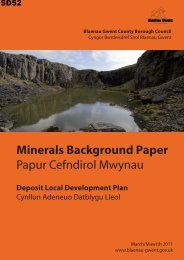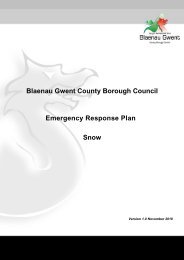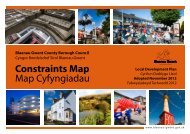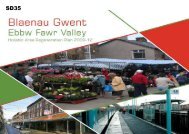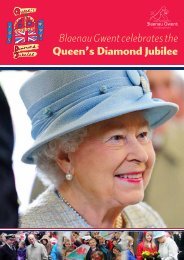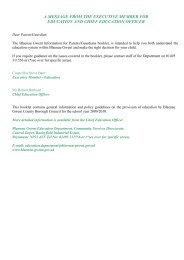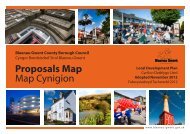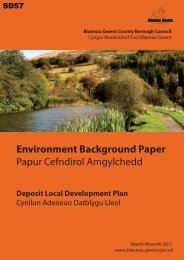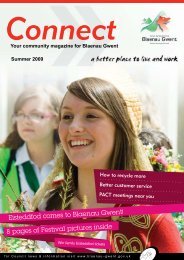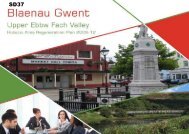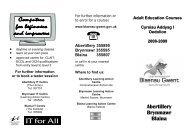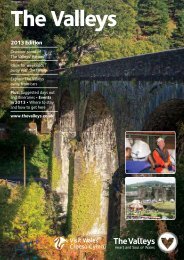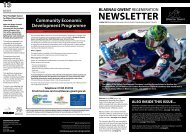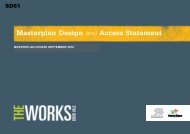Access Car Parking & Design - Blaenau Gwent County Borough ...
Access Car Parking & Design - Blaenau Gwent County Borough ...
Access Car Parking & Design - Blaenau Gwent County Borough ...
You also want an ePaper? Increase the reach of your titles
YUMPU automatically turns print PDFs into web optimized ePapers that Google loves.
<strong>Access</strong>, <strong>Car</strong> <strong>Parking</strong> and <strong>Design</strong><br />
<br />
<br />
<br />
<br />
<br />
Ensure paths are direct, well lit, open and clear of hiding places;<br />
Set paths in landscape strip to avoid nuisance to neighbouring properties;<br />
If possible keep paths away from sides and rear of properties;<br />
Avoid planting hedges that may obscure the line of a path or make access<br />
physically difficult;<br />
Keep the widths of new paths sufficiently wide to make them seem inviting<br />
and easy for everyone to use.<br />
4.50 Developers should bear in mind the needs of the less able and disabled.<br />
Steep gradients steps and stiles can cause difficulties for wheel chair users,<br />
the elderly and for these with pushchairs. Paths should be properly drained<br />
and although it is appreciated that would not be environmentally acceptable<br />
for most rural paths to be surfaced, in certain circumstances paths should be<br />
surfaced (contact Countryside Section, Disability Wales for further advice).<br />
4.51 There is no general rule applying to the width of public rights of way and the<br />
width is a matter of fact to be determined in each case. Sometimes the width<br />
is formally recorded on the Definitive Statement, or it may be the width<br />
between fence or hedge boundaries, or the width may also be that which the<br />
public have customarily enjoyed.<br />
4.52 In the absence of specific evidence a reasonable useable width is usually<br />
considered to be 2 metres for a footpath, 3 metres for a bridleway and 5<br />
metres for a byway.<br />
4.53 In the case of an enclosed footpaths and bridleways greater widths should<br />
generally be provided, this should usually be 3 metres for footpaths and 4<br />
metres for bridleways.<br />
4.54 Cyclists are legally entitled to use bridleways but not footpaths. Where it is<br />
intended for a route to be upgraded for cyclists, for example by resurfacing a<br />
bridleway, care should be taken to ensure that the surface is suitable for<br />
horse-riders and other users. When any change of use is proposed, a Risk<br />
Assessment should be carried out.<br />
4.55 New development, especially housing, can create a significant increase in use<br />
of local paths. This can cause problems if the public right of way is, for<br />
example, unsurfaced and has not historically seen heavy use. In these cases,<br />
the Council may assess the impact of the development on local paths and<br />
may seek financial contributions from developers to upgrade them so as to<br />
accommodate this additional use.<br />
Supplementary Planning Guidance 13<br />
April 2012



